Vlisco Group, the Netherlands
On the sidewalks, boutiques and bazaars of many sub-Saharan Africa cities, it is not uncommon to see women dressed from head to toe in close-fitting and dynamic fabric with bold colors and geometric shapes. While this fabric has become synonymous with the continent’s fashion, its history can be traced through the global success of one individual and the company he incorporated over 160 years ago.
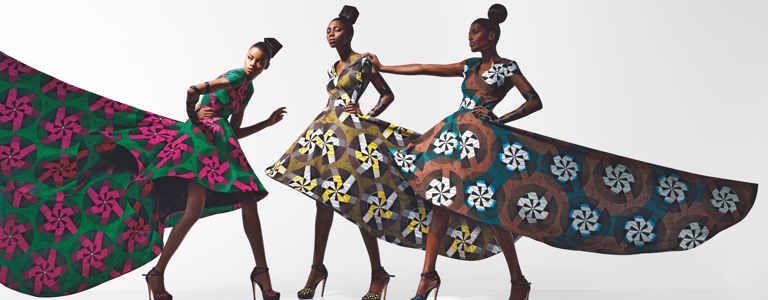
In 1846, Dutch entrepreneur Pieter Fentener van Vlissingen established the textiles company P.F. van Vlissingen & Co, now called the Vlisco Group (Vlisco), in the Dutch city of Helmond. Mr. van Vlissingen’s passion for hand-printed textiles called batik – a Javanese cloth from the former Dutch colony of Netherlands East Indies (East Indies), which later became the Republic of Indonesia – inspired the initial production and sales of the fabric in the Kingdom of the Netherlands (Netherlands) and the rest of Europe.
Although Vlisco originally sold batik in Europe, the fabrics were also used for bartering by traders on Dutch ships travelling from the East Indies and stopping over on the West African coast. When African women in the region first encountered the textile, they fell in love with it and subsequently embraced it as their own. As one of the earliest players in batik trade in West Africa, for over a century Vlisco has enjoyed a dominant position in the area.
In 2012, the company was the market leader in textile prints and designs produced through unique combinations of Indonesian batik, Dutch design and African heritage. At the same time, Vlisco had developed four major textiles brands – Vlisco, Woodin, Uniwax and GTP. The company, furthermore, had established offices in the Republic of Benin (Benin), Burkina Faso, the Republic of Côte d’Ivoire (Ivory Coast), the Democratic Republic of the Congo (DRC), the Republic of Ghana (Ghana), the Federal Republic of Nigeria (Nigeria), the French Republic (France) and the Togolese Republic (Togo).
Research and development
Since its foundation, Vlisco has managed a remarkable transition from Asia to the heart of Africa and then to the rest of the world. This transformation has been, in large part, due to the company’s skillful development of batik manufacturing tradition.
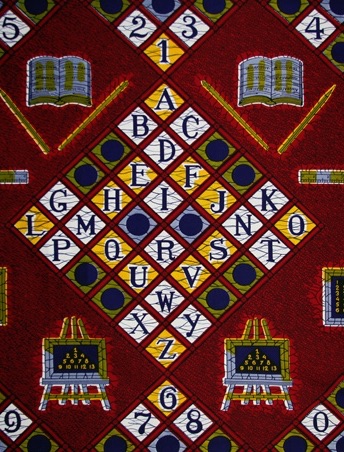
textiles that the company thereafter produced were sometimes
referred to as Real Dutch Wax Block Print, pictured (Photo: Vlisco)
Made by locals on the Indonesian Island of Java and sold internationally by the Dutch since the 17th century, batik textiles were originally created by applying hot melted wax (called mala in Javanese) to cloth; the cloth was then dipped in dye. As the wax clung onto the fabric and seeped through, it would prevent or “resist” the dye from penetrating the material or migrating to other selected areas of the fabric – hence the name “wax resist” style. The area of the cloth where the “resist” or wax was applied retained its original color; other areas took on the color of the dye.
Several colors were used in this process, according to the desired effect, which involved a series of dyeing, drying and waxing stages that created patterns of flat arabesque (artistic designs based on interlocking linear lines) or incorporated calligraphy (a type of art based on lettering).
Moreover, by using two deep engraved copper rollers on which a mirror image of the required pattern was etched (as opposed to woodblock printing; copper rollers modernized and speeded up the printing process), a pattern of melted wax was printed directly on the two opposing sides of the cotton fabric.
Following the dyeing step of the process, a negative image of the printed pattern was left on the cloth. This image was then ironed between paper towels or newspapers to absorb the wax, whereupon the deep, rich colors and fine crumpled lines that give batik its unique appearance would be revealed. Modern processes, in contrast, dip the image into a solvent to dissolve the wax.
Within a few years of encountering this process (in the 1850s), Vlisco adopted it – the materials produced were often referred to as Real Dutch Wax Block Prints. Soon thereafter, however, the company had to change its commercialization strategy for a number of reasons including political instability and increased economic competition in the East Indies – which resulted in decreased Vlisco batik exports to the region. Despite some early setbacks in that part of Asia, by the 1870s a vibrant and receptive market for printed cloth had emerged off the West African coast.
Having relocated and established a strong foothold in this part of Africa (the first shipment of wax prints to the continent was in 1893), by early 1930s the company’s executives visited the continent, adapted designs to suit local tastes and established a new color laboratory in Holland – which improved production quality and reduced costs. Indeed, from 1934 the company’s textiles acquired a distinctively “African” style – which showed a preference for deeper, bolder colors and prints with a “cracked” or craquelé effect (compared to the more somber, traditional Javanese fabrics).
Following key investments including establishing a new research and development (R&D) facility in Holland (in 1947) and hiring professionally trained staff (from the 1970s onwards), the company has relied mainly on the creativeness of its design team to innovate new fashions. Commensurate with these investments (which led to increases in exports in Dutch wax from 1 million yards, in 1946, to 34 million yards, in 1960), Vlisco has engaged in co-designing projects with cutting edge creators in the industry.
Changing its focus from East Asia to West Africa (in 1981), furthermore, the company enhanced its presence in the continent by acquiring two textiles manufacturers – GTP, in 1965 (a company based in Ghana); and Uniwax, in 1967 (which is based in the Ivory Coast). Having made the strategic decision to focus on Africa (the company’s European market, too, had diminished in this period), in 1993 the company crossed another milestone when its production processes became mostly automated and hand-stamped batik cloths production was virtually ended.
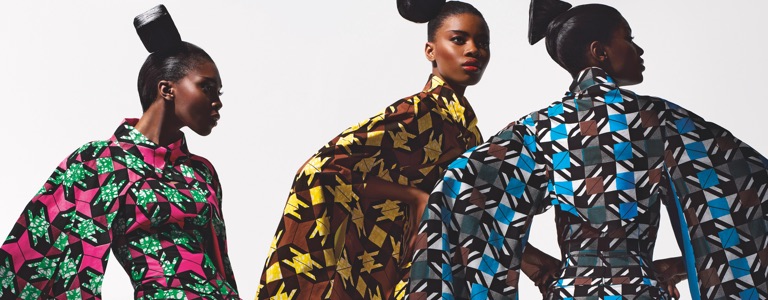
The company currently relies on state-of-the-art printing machines (which have allowed it to produce unique patterns that change with prevailing trends and fashions in Africa) and modern supply chain logistics software and distribution channels. As a result, Vlisco’s fabrics have become “part of the African cultural heritage,” according to Roger Gerards, creative director for the Vlisco brand. (Vlisco, by Jos Arts, 2012)
By 2012, Vlisco had become an internationally renowned design house that develops, produces and exports colourful print designs for West and Central Africa markets. In addition, the company exported batik inspired designs to consumers of the African diaspora living in large metropolitan areas such as New York, London and Paris.
Branding and commercialization
Traditionally, Vlisco has produced quality fabrics that are easily distinguishable from those of other textiles vendors. A distinguishing feature of the company’s products is the high tech processes – called Wax Print and Java print – by which its fabrics are made. The company is proud of its industrialized Java inspired production method, which involves a complex process of printing patterns on wax using long sheets of cloth, which are then immersed in vats of dye – predominantly indigo. Where the cloth does not absorb the dye, a basic pattern can be set.
Because the wax-printed fabric can be passed through machines that randomly separate parts of it from the wax, no two lengths of cloth are the same and an organic, rich quality can be produced and printed with up to three different colors.
At the heart of the company’s production method is the Wax Print. Wax Cover is a kind of Wax Print that is enriched with one or more colored “cover” patterns. These patterns represent a variety of everyday shapes including abstract objects such as circles and stripes and pictorial forms such as birds and leaves.
Commonly seen in the fabrics of Western and Central Africa, the eastern region of the Sahara desert and the Sahel region of Africa (the eco-climatic area separating the north and south Sahara), these symbols and patterns have become signature motifs of Vlisco products.
Super Wax, meanwhile, is the company’s highest quality Wax Print. This fabric is made with densely woven fine cotton with specific designs of three colors (typically made of bright, vivacious and solid hues) – depending on the expected result. Two of these colors exhibit the natural craquelé effect of the wax and the third is a solid color.
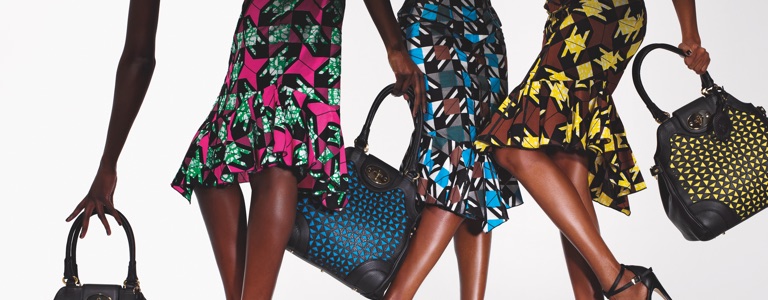
Despite making key investments in product quality, up until the 2000s the company’s fabrics were commercialized in Africa without a clear branding and commercialization strategy. Indeed, many people on the continent talked about “Real Dutch Wax” without associating the phrase with Vlisco or, actually, with Holland. This all changed, however, when the company’s profit margins and market share suddenly plummeted in the early 2000s.
In part due to Vlisco’s unstructured branding policies before this period, a changing customer demographic (the company’s clients had become younger, more ambitious and more internationalized in their fashion tastes) and global economic liberalization policies (in 2004; this led to cheaper imitation batik fabrics from Asia entering the African market), the company reached a turning point: make changes or continue to decline. In reponse to these challenges, Vlisco seized the opportunity to improve its branding and commercialization strategy radically.
To mitigate the risk of plummeting sales, brand dilution and becoming outdated, in 2006 Vlisco relied on a corporate image and logistics makeover managed by BrandWatch (BW), a brand advisory bureau. Working with consultants from BW, the Dutch company made three key branding decisions: it would actively develop brand identities; it would become a distinct fashion house creating new, thematic designs rather than simply functioning as a traditional textiles maker; and, it would create academies of specialist tailors who would fashion new clothes inspired by its fabrics.
Traditionally, the company rarely actively used the Vlisco name as a brand identity. By 2012, that had all changed; the textiles manufacturer had developed four unique brands: Vlisco, Woodin, Uniwax and GTP. Each of these brands, moreover, has its own style, identity and customer base.
Woodin is a pan-African print brand by and for Africa, according to the company. The brand intends to capture the optimism of the modern African lifestyle and is aimed at young men and women. Uniwax, meanwhile, is an original Ivorian wax brand that seeks to bring elegant Ivorian style across the continent. GTP, which was established by Ghanaians before being incorporated into Vlisco, is a brand for men and women with a connecting thread of joyful and colorful prints.
As part of its brand image makeover, the company has actively promoted its products so that they resonate strongly with customers. To this end, Vlisco launched an awareness-raising campaign for the Vlisco brand through TV, billboard, news print advertising and fashion shows (the brand had its first catwalk show in Paris, France, in 2009).
The company, furthermore, has enhanced its corporate identity by creating themed collections of its fabrics and extending its product portfolio to include accessories. Determined to stay ahead of its competitors (including imitators of its designs), and keen to attract a new base of fashion savvy African women, Vlisco has initiated a quarterly strategy for launching new designs.
In 2007, for example, the company’s design team launched a new fashion collection called Belle d’Afrique (a wax block collection exhibiting ornate mirrors, shells, flowers and jewelry boxes) that was inspired by African women throughout history. In the same year the Vlisco brand launched “Graphic fashion” – a collection of dresses and accessories.
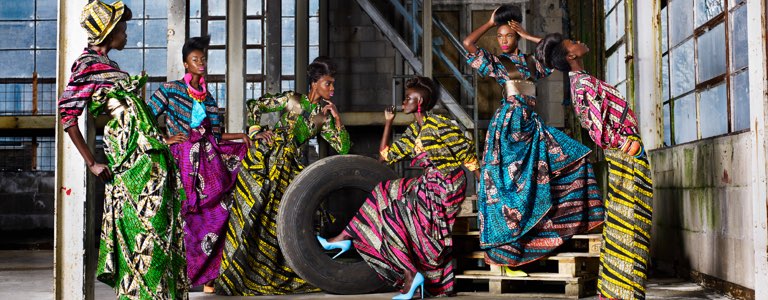
Using the latest in laser-cut techniques, Vlisco’s luxury “Dazzling Graphics” design range has exhibited remarkable, stitched characters that change lace into a graphic that is appended with sequins and attached to a dress, thus adding a sense of charm, polish and trompe l’oeil movement (a psychedelic visual illusion). Other collections have followed including Sparkling Grace and Gallery of Poems.
To complement such collections, the company commenced a ready-to-wear range for the Vlisco brand (including a look-book with sample designs) and a new line of Haute Maroquinerie – high-end leather crafted goods. Including black leather shoes and bags designed with the same laser-cut techniques, an exciting range of mono-colored suede that appeared in blue, yellow, pink and green hues accompanied the ready-to-wear line. The company’s in-house designers have subsequently produced two new kinds of Vlisco collections: Luxury Editions and Limited Editions (including lace products embroidered with high-end crystals).
In addition, the company enhanced its brand image when its first flagship store was launched in Cotonou, Benin (2007). No longer relying on networks of market vendors to commercialize its products, the Contonou boutique, which was designed by Creneau International – a renowned brand image consultancy firm, has allowed the Vlisco brand to reach clients via unique customer experiences.
The company’s store combines a ready-to-wear fashion hub at its core with a library-style display of colorful Vlisco brand fabrics at the periphery. Long, rectangular tables with lights for reading, columns of cloth and “bookshelves” with fabrics folded to create the appearance of hardback volumes, are accompanied by ebony hued fixtures, gold interior finishing and mosaic tiling lining the entrance.
Designed for elegance and comfort, the boutique offers a unique and stylish opportunity for the company’s well-to-do clientele (high-earning women between 25 and 45 years old who are well-educated and have a refined sense of fashion) to receive personalized service. As the store manager of the Contonou boutique said, “[Vlisco tries] to sell a story with [its] cloths. [The company tries] to make clear that Vlisco offers more than just classic wax, that [Vlisco is] to be the fashion icon of Africa.” More Vlisco stores have been established in Lome, in Togo (2008) and Abidjan, in the Ivory Coast (2009).
By taking charge of its branding and commercialization strategy, streamlining its design culture, increasing brand awareness, and enhancing consumer confidence and interest, the company has transitioned from a localized textiles maker to an international fashion house.
Trademarks and trade secrets
With a traditionally illustrious corporate name that has become the byword for quality and innovation, and having a rich array of popular brands in its portfolio, Vlisco has sought to secure its corporate identity and intangible assets via the intecllectual property (IP) system.
Eager to protect its corporate name, the company embarked on a comprehensive IP strategy resulting in trademarks being registered for Vlisco (in 1975; five years after adopting it as its corporate name), VVH (Van Vlissingen Helmond; it was filed as a word and a mark in 1997), super-wax block prints guaranteed real Dutch printed in Holland (1997) and Uniwax (filed as a word and mark in 2006) at the United States Patent and Trademark Office .
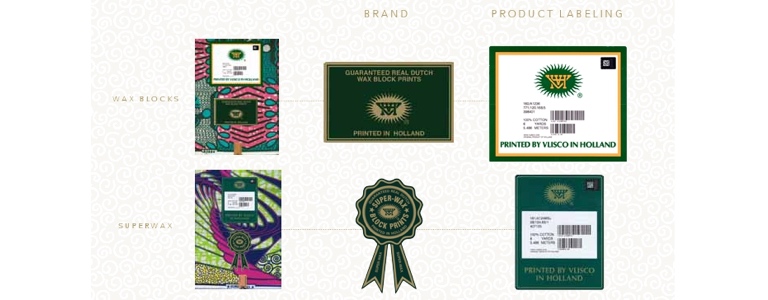
Also keen to have secure IP assets around the world, the Vlisco brand has been registered as a trademark (1958) via the International Trademark System (the Madrid System) managed by the World Intellectual Property Organization (WIPO).
The company, moreover, has secured its assets by utilizing the IP offices of other countries in Europe including the Benelux Intellectual Property Office (BIPO, 1971, 2007), the United Kingdom (UK) intellectual property Office (1958, 1972) and the Danish Patent and Trademark Office (1977).
In addition to its reliance on the IP system, the company has protected the processes and methods of its wax manufacturing technologies by guarding them as well kept trade secrets within its headquarters in Holland. Not even Vlisco’s subsidiaries in West Africa are aware of the secret formulas involved in the company’s wax production.
Comprehensively securing the IP rights of its popular brands, creations and manufacturing processes, the company has enhanced its identity and expanded its commercialization opportunities across the world.
IP infringement and enforcement
Despite valiant efforts to secure its IP assets, Vlisco has faced IP infringement in several countries. The company is keenly aware that within days of its fabrics being launched, cheaper imitations have become available especially in Asian and African markets.
Although such counterfeit products are low quality and easy to distinguish (many of them are flimsy, irregular, and made of synthetic material instead of cotton), the effect on the company’s profit margins have been significant. Coupled with economic and political instability in West and Central Africa in the late 1990s, IP infringement contributed significantly to the downturn in Vlisco’s net turnover.
The company, however, has established a robust IP enforcement regime that includes hiring private investigators to help establish the facts where infringement is suspected. Where evidence of copying has been established – the Woodin brand, for instance, has been copied in unlicensed mills in Asia – raids have been made into the infringing distributor’s premises. In such cases, goods have been seized and prosecutions undertaken via the relevant national prosecuting authority.
Moreover, Vlisco encourages its network of local distributors to act as its eyes and ears and to report suspected cases of copying. Through a wide strategy of IP registering, monitoring and enforcement (and via positive incentives to distributors to promote genuine goods), the company has sought to recover losses made to counterfeited products while securing its hard won corporate identity and brands image.
Business Results
Since the 19th century, Vlisco has not only developed a strong retail and brand presence in West and Central Africa; the company has become the biggest textile company in the Netherlands. With four elegant, bold and expressive fabric brands in its portfolio, the company has also emerged as the epitome of style and quality in Africa.
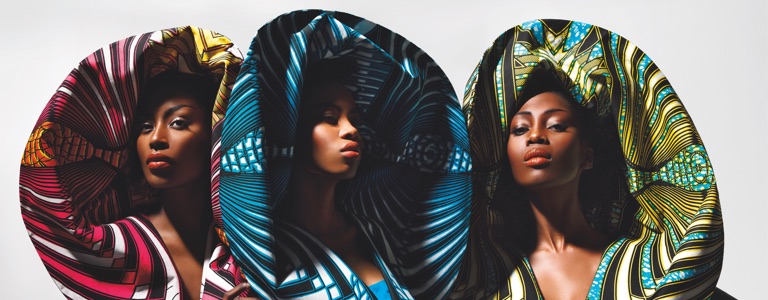
In recognition of this, in 2010 the private equity group Actis, which was voted the African Private Equity Firm of the Year (2011), bought a 100% stake in the Vlisco Group. Not only did Actis pay US$151 million for the company; the company pledged to protect Vlisco’s valuable IP assets – including its four major brands.
Vlisco has continued to expand via new, exclusive boutiques in Paris (in 2010) and Kinshasa, the DRC (in 2011). As of 2012, the company produced 60 million yards of branded fabric annually and employed over 2,700 people in the Netherlands and Africa (1,700 of them being based in West and Central Africa). At the same time, Vlisco continued to develop a strong brand and retail presence across the world.
Putting Your Best Foot Forward
Over 165 years ago, Mr. van Vlissingen transformed a traditional handicraft industry in Java into a luxury brand in the Netherlands with distribution networks in Europe, the West African Coast and the East Indies.
Having gained a market leading position in Africa and established strong brands with international IP protection, the company he created was bought by a leading investment company that pledged to protect its illustrious heritage and brands portfolio.
Well-healed African women around the world meanwhile continue to dress from head to toe in dazzling printed fabrics with beautiful accessories genuinely made by the Vlisco Group.
Source: WIPO

 Client Focus
Client Focus